HIGHLIGHTS
PROGRAM UPDATES
The AWC Finds Success During ICC Public Comments Think Wood Promotes Latest Repair and Remodel Trends Among Residential Contractors WoodWorks’ U.S. Mass Timber Construction Manual Is Now AvailableINDUSTRY NEWS
Low Housing Inventory, Uncertain Commercial Demand Influence Real Estate Market Predications Bowdoin College Unveils First All-Mass Timber Commercial Project in Maine New Defense Bill Includes Support for Mass Timber Pilot Project San Francisco Welcomes First Multistory Mass Timber Building Climate-Neutral Certification Pushes Companies to Measurably Reduce Carbon Emissions Lendlease Partners With Stora Enso to Develop Sustainable Timber Products, Reduce Building EmissionsINSIGHTS ON THE COMPETITION
California Turns to Steel-Framed Tiny Homes to Combat Homelessness Concrete Industry Currently Voting on CMU Checkoff AuthorizationINDUSTRY RESOUCES
Virginia Tech's Monthly Housing ReportProgram Updates
The AWC Finds Success During ICC Public Comments
The American Wood Council (AWC) continues to create markets for wood products during the 2024 International Building Code (IBC) and International Fire Code development process. During the recent public comment period on proposed code changes, the AWC got a provision inserted to eliminate an overly restrictive code interpretation that added cost and complexity to large multifamily wood-frame construction. The newly approved language is based on the AWC’s Design for Code Acceptance #3, Fire-Resistance-Rated Wood-Frame Wall and Floor/Ceiling Assemblies.
The AWC also advocated for a change to permit fully exposed mass timber ceilings in wood buildings up to 12 stories tall. The proposal is based on research conducted by the AWC with funding from the USDA Wood Innovation Grant program.
All proposed changes are now subject to a two-week online voting period, which will conclude in late October. The final list of code changes will be certified in December.
Think Wood Promotes Latest Repair and Remodel Trends Among Residential Contractors
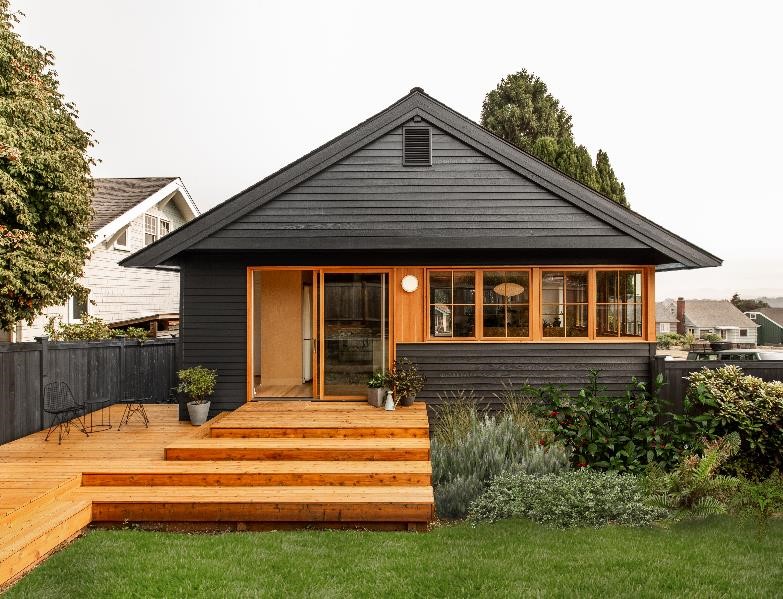
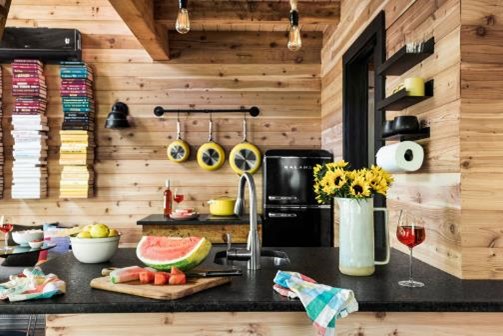
Coming off outdoor living season and heading into fall, Think Wood is keeping residential contractors up to date on the latest repair and remodel trends with content on custom single-family homes.
Think Wood’s top-performing content in September was a new Before and After home renovations blog featuring wood upgrades for every room of the house. The renovations blog was also the best performer in Think Wood’s September monthly newsletter, with more than 600 clicks. The contractor newsletter also promotes species association content, with this edition including links to Real Cedar porch makeover videos.
Think Wood will promote interior applications on social media, including videos on wood feature walls and ceilings, as contractors move to interior remodels. The campaign continues to invest in this type of targeted content to support the single-family home market.
WoodWorks’ U.S. Mass Timber Construction Manual Is Now Available

WoodWorks’ U.S. Mass Timber Construction Manual is now available to support general contractors and installers in increasing their knowledge and capacity to undertake mass timber building construction. While developers and architects have long been keen to pursue the potential of mass timber materials, the lack of experienced general contractors and installers has proven a major market barrier.
The new manual is one of several steps WoodWorks has recently undertaken to address the capacity gap head-on. In addition, WoodWorks has launched a Construction Management Program, which provides management-level training for professionals who estimate, procure, and manage new commercial and multifamily projects, and set up partnerships with carpenter unions and merit-based training centers to develop and deliver installer training. The U.S. Mass Timber Construction Manual will provide a seminal resource across all these training elements.
Download and share the U.S. Mass Timber Construction Manual today.
Industry News
Low Housing Inventory, Uncertain Commercial Demand Influence Real Estate Market Predictions

Forbes recently surveyed its 11-member Real Estate Council of experts on key predictions influencing housing prices, consumer behavior, and the overall U.S. real estate market.
Overall, Forbes’s experts expect the tight housing market to continue, driven by extremely low inventory, rising prices, and high demand, including as more millennials attempt to enter the market. The United States’ shortage of affordable housing will continue, forcing more consumers to turn to multifamily and other rentals, which may in turn drive up rental prices. The experts are watching inflation’s impact on mortgage rates, which may cool the market, though not necessarily to the benefit of first-time home buyers as opposed to investors.
Commercial real estate will likely continue to face challenges, as the shift to a more hybrid workforce persists, irrespective of the pandemic.
Read all 11 of the council’s predictions here.
Bowdoin College Unveils First All-Mass Timber Commercial Project in Maine
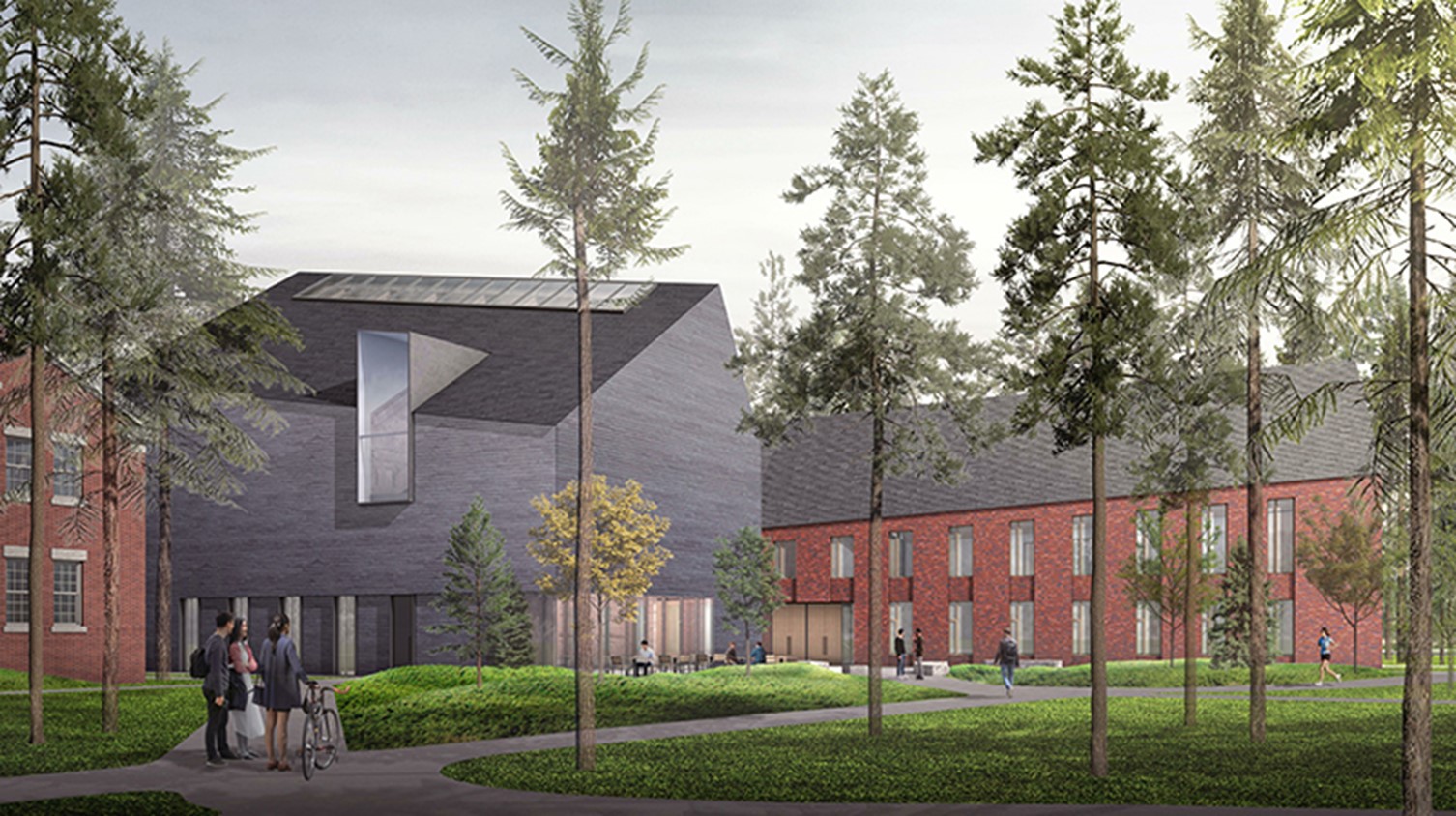
Bowdoin College’s Barry Mills Hall will soon be Maine’s first complete mass timber structure, from grade level to roof. The building features a mix of glued-laminated timber beams and columns and a CLT wall system to resist wind and seismic loads, also a first in Maine.
Bowdoin, which achieved carbon neutrality in 2018, chose mass timber specifically for its lower embodied carbon footprint and faster construction time. Designers at HGA Architects and Engineers estimate that by using mass timber, they will reduce the embodied carbon of the building to roughly 25% of a steel alternative, while construction firm Consigli Construction predicts faster install times and lower labor demands than would be incurred if building with masonry.
Barry Mills Hall is scheduled to open in 2023 and will ultimately house the John and Lile Gibbons Center for Arctic Studies. The U.S. Forest Service, in partnership with the U.S. Endowment for Forestry and Communities, provided funding to support Bowdoin in pursuing climate-smart, sustainable building solutions on its campus.
Read more about Barry Mills Hall and see images here.
New Defense Bill Includes Support for Mass Timber Pilot Project
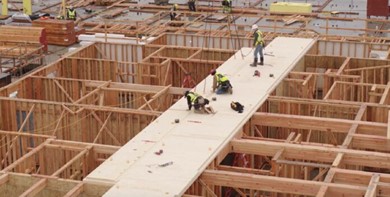
The House Armed Services Committee’s recent markup of the 2022 National Defense Authorization Act bill included language to establish a pilot program to evaluate the effects of using mass timber products in Department of Defense construction projects. The AWC has been working with the DOD for more than five years to raise awareness of mass timber and build the evidence base demonstrating mass timber’s performance capabilities in relation to DOD construction standards.
In response to the markup, AWC President and CEO Jackson Morrill stressed how the mass timber pilot program will help the DOD address the military’s housing needs while also contributing to carbon-reduction goals. Morrill noted, “Mass timber construction will speed up construction times, ultimately saving money and getting service members into housing more quickly. The DOD saw a 37% reduction in schedule duration and a 31% increase in expected energy performance in its first mass timber construction project.”
Read more about the proposed pilot program here.
San Francisco Welcomes First Multistory Mass Timber Building
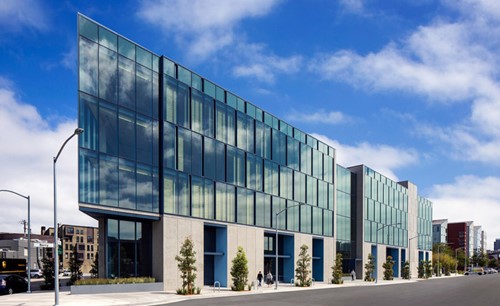
Completed earlier this year by architects Perkins&Will and developer SKS Partners, with project support from WoodWorks, the 58-foot-tall, 134,000-square-foot 1 De Haro is San Francisco’s first multistory mass timber building.
The 1 De Haro project includes three stories of exposed glulam columns and beams, CLT floor slabs, and a concrete podium. The development team chose mass timber for its light weight, which translated into a less expensive foundation system; time savings created by mass timber’s off-site fabrication and installation methods; and sustainability benefits, including an estimated 51% reduction in embodied carbon compared with a comparable concrete structure.
The California design community is optimistic that 1 De Haro will be just the first of many mass timber structures in the state, enabled by California’s recent adoption of the tall wood provisions of the 2021 IBC, which allow for mass timber buildings of up to 18 stories. California is one of nine jurisdictions to adopt the standards thus far.
Climate-Neutral Certification Pushes Companies to Measurably Reduce Carbon Emissions

Forbes recently covered a growing movement among private companies to pursue certification as climate neutral in order to assert their commitment to addressing the climate emergency to investors and consumers.
Climate Neutral, an independent nonprofit organization, works to decrease carbon emissions by supporting brands to measure, offset, and reduce their carbon emissions using a series of standardized environmental benchmarks and product labeling. Over 320 companies have achieved the certification to date, which they must renew annually. Last year, Climate Neutral reported that its certified brands reduced and offset the equivalent of 800,000 tons of carbon dioxide.
Climate Neutral’s methodology takes particular aim at decarbonizing supply chains and product design to make the most impactful emission reductions. Forests and wood products offer significant opportunities for decarbonization, either directly or via reforestation and afforestation activities supported by voluntary carbon markets.
Read more about Climate Neutral’s certification here.
Lendlease Partners With Stora Enso to Develop Sustainable Timber Products, Reduce Building Emissions
International real estate firm Lendlease recently unveiled a partnership with Stora Enso, a leading supplier of sustainable wood building products, in an effort to reduce the carbon footprint of its buildings. The two companies had previously partnered on eight buildings over the past decade, including the 25 King office building in Brisbane, Australia, which has resulted in a 74% reduction of emissions. As part of the new partnership, Stora Enso will increase its timber products production capacity in Milan to supply Lendlease’s European development portfolio, collectively valued at $52 billion.
Lendlease’s CEO, Tony Lombardo, noted the particular relevance of this partnership toward Lendlease’s goal of becoming net zero by 2025 and absolute zero by 2040.
Read more here.
Insights on the Competition
California Turns to Steel-Framed Tiny Homes to Combat Homelessness
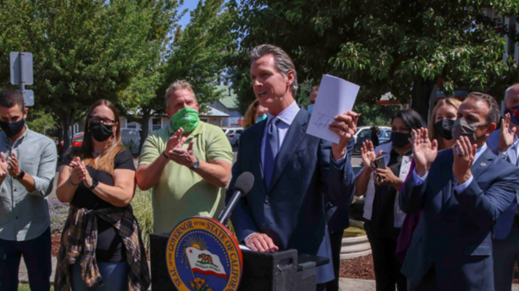
Two nonprofit organizations are leading an effort to build 70 steel-framed tiny homes in San Francisco as part of an 18-month pilot project to reduce homelessness in the city. The energy-efficient, 64-square-foot homes are being designed by Gensler, one of the largest architecture firms in the world. If successful, project partners will replicate the tiny houses in other locations across the city and state as part of a new statewide effort to create 42,000 housing units for the homeless.
Gensler and project partners settled on steel for its precision manufacture, stability, durability, reuse and recycle potential, and fire safety.
Read more about Gensler’s design and the pilot project here.
Concrete Industry Currently Voting on CMU Checkoff Authorization
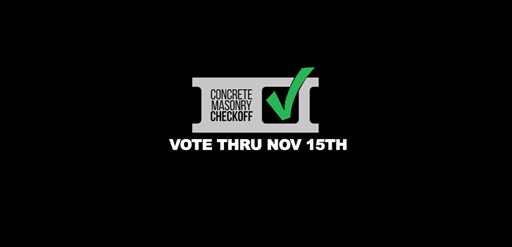
Concrete industry stakeholders are currently voting to authorize the prospective CMU Checkoff “to put block back on top and take back market share.” The voting period opened October 15 and concludes at midnight on November 14.
In encouraging stakeholders to register to vote for the checkoff, organizers pledged:
- “For just one penny for every block sold, we can generate and invest millions of dollars every year in programs that will drive concrete masonry sales.
- “Every producer pays the same amount per block, and every producer benefits.
- “At least 50% of our program dollars will be invested regionally, and every checkoff dollar will be invested to create demand for concrete masonry units.
- “The checkoff board will be made up of block producers nominated by industry, with representation of all types of companies, from big to small, north to south, east to west.”
Read more about the CMU Checkoff here.
Industry Resources
Virginia Tech's Monthly Housing Report
This monthly housing commentary report is a free service of Virginia Tech and is intended to help one gauge future business activity in the U.S. housing market.
August 2021 Reports (released in October 2021)
Part A: August Housing Commentary
Part B: August Economic Conditions



